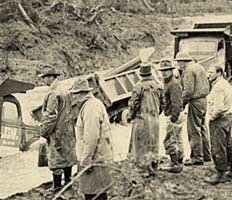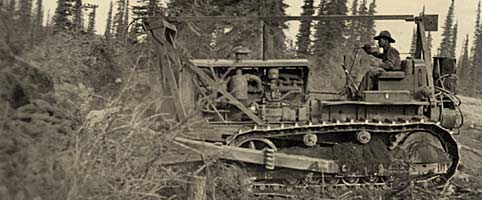
How to Build a Northern Road
The first step in building a road is determining its route. For the Alaska Highway project, much of this was accomplished by "sight" surveying – climbing a tree or standing on a bulldozer, picking a point in the distance and working toward it while at the same time attempting to avoid muskeg, rock outcroppings and steep grades. First Nations guides were hired to help surveyors navigate the difficult terrain.
Alcan trucks roll on! Bulldozer and trucks on the Alaska Highway. 1943. (view more details)
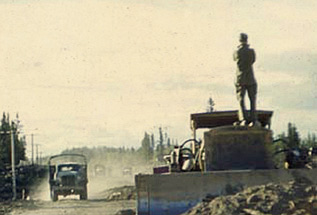
Construction crews followed on the heels of the surveyors, and the "train system" was employed by most of the regiments working on the Alaska Highway. Each regiment divided up into Companies A,B,C, etc. A locating party led the crew by marking the road with axe blazes in the trees or pieces of bright cloth. Bulldozers followed close behind plowing out the centre line, pushing the trees and brush to the sides, and leveling the ground. Slow going was the pace: only two or three miles could be completed a day.
Convoy... (view more details)
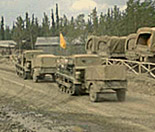
Behind the bulldozers other units built culverts or temporary bridges, dug ditches to keep the road surface relatively dry, and in soggy sections laid down a wooden bed consisting of several feet of trees. This "corduroy road" would then be covered with dirt and packed down, ensuring that supplies and fuel moved forward to the front units.
Rock shelves were cut along Muncho and Kluane Lakes, the slowest going parts of the construction. 1942. (view more details)
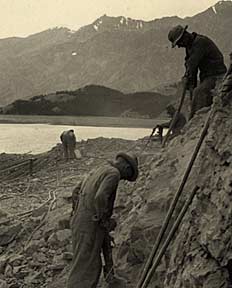
Finally, the largest unit would follow as much as 30 to 40 miles behind the bulldozers, widening and straightening the road, eliminating some steep grades, and covering muddy surfaces with gravel. The result was a passable military road 18 to 24 feet wide, far below the standards required for a safe civilian highway.
The only regiment that did not use the "train system" was the 18th Engineers. They had the advantage of a wagon road from Whitehorse to Kluane to move equipment and supplies. This regiment was divided into six companies, all equipment was divided equally, and each company constructed 5-10 mile sections of the road. When they were completed one section they would leap-frog to the front of their regiment using the old wagon road and start a new section.
The 18th Engineers Regimental Band giving a concert on the shores of Kluane Lake. 1942.(view more details)
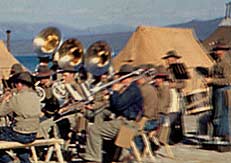
The 18th Engineers working north of Kluane Lake encountered permafrost for the first time. Permafrost did not respond well to the traditional method of road construction. Stripping the vegetation allowed the frozen soil to melt into a cold slush that never dried out. After struggling for weeks, the 18th Engineers devised a new method of road construction that prevented the permafrost from melting. First, vegetation was cut by hand and left where it fell to avoid disturbing the insulating vegetative layer. Next, extra insulation was piled on including logs, branches and brush. Bulldozers flattened this layer, then truckloads of dirt and gravel were dumped on top. Other bulldozers, graders and rollers packed and flattened the road surface. When finished, this permafrost road looked like a dike snaking its way through the wilderness.
Traveling along the Alaska Highway. (view more details)
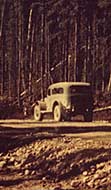
Albert Bloomstrand in front of a bulldozer. (view more details)
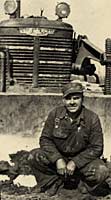
common sight during construction...(view more details)
